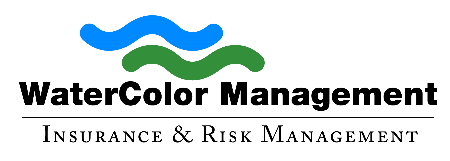
Whether it’s slipping and falling, getting into auto accidents, or opening up the company to a host of malware attacks, there is no shortage of risks for every industry. In the wastewater treatment industry, this is easy to understand. In fact, wastewater treatment plants are hazardous to employees and even have risks such as asphyxiation in some cases.
Seeking out and understanding risks and their severity in the wastewater treatment process is key to protecting employees from injuries, long-term ailments, and even death. In this article, we’ll dive deeper into wastewater operational risks.
What Are Some Wastewater Treatment Plant Risks?
The potential for slips, trips, and falls exists in wastewater treatment plants, and those hazards become more acute when gases linger in the air throughout a facility. The possibility of a severe injury or even drowning from falling into a small space at a plant means the risk associated with working in a wastewater treatment plant may be higher than other industries.
Wastewater plants are also veritable houses for gases. The main gases that should be of concern in a wastewater treatment plant risk assessment program are methane, oxygen, and hydrogen sulfide. The latter and methane are the byproducts of the decomposition of organic materials that exist in the waste that flows through a plant. The buildup of these gases may lead to the lack of air, or in some cases, explosions when mixed with a source of ignition.
However, there may be too many gas hazards to count. Beyond the main gas hazards are the dangers that exist from the purifying chemicals, including chlorine, ammonia, ozone, or chlorine dioxide that are used in the processing of waste. The potential for an unlimited amount of toxic gasses exists from the chemicals that may be dumped into the wastewater system from the industrial base.
Elimination of these gas hazards is unfortunately impossible, so employees of a plant depend on reliable gas detection equipment to protect themselves. A standard four-gas monitor equipped with the proper sensors provides cover from methane, oxygen hazards, and hydrogen sulfide. Upgrading from bigger monitors, such as five-gas or six-gas monitors, allows plants to build on the level of protection and detection.
Protecting with Wastewater Treatment Coverage
Wastewater Treatment Coverage protects plants from various risks and covers different components of a plant. A specialized wastewater treatment coverage plan provides solutions that are designed to defend plants against both spurious and genuine claims, as well as working to preserve their assets.
At Watercolor Management, our policies don’t have standard industry coverage exclusions for mold, Legionella and other bacteria, corrosives, and other contaminants. The same applies to HAZMAT, job-site, own-site, and first-party gradual pollution – all critical to our water-industry clients.
A solid wastewater treatment coverage plan should include:
General Liability
Products Liability (including mold and bacteria) and Products Recall
Professional Liability
Pollution Liability
Property Insurance
Commercial Auto Insurance
Boiler and Machinery Insurance
Controlling Risk at a Wastewater Treatment Plant
There is no simple way to cut down on risks or risky behavior, but there are things that can be done to address these. They include:
- Promoting Hazard Awareness: Everyone should be familiar with hazard recognition techniques and outline the right way to do dangerous tasks.
- Acknowledging Physical Limits: If someone at a plant is uncomfortable with a task due to a certain health condition, it must be accepted that they will not be forced to perform it.
- Empowering Employees: Everyone needs to have a personal investment in safety for it to sink in. Plant leaders should engage staff in program management and create opportunities for them to contribute ideas.
- Promoting Accountability: The responsibility of all safety methods should be enforced to staff of all levels. Having no enforcement is the same as having no policy at all.
Every plant’s risk awareness and methods are different due to employee training, past experience, and other factors. Operators face various hazards in wastewater treatment plants daily. Maintaining plant safety means recognizing risks, assessing them, and taking the right steps to limit the risk.
About Watercolor Management
WaterColor Management has insured the water industry for over 30 years. Our policies include unlimited defense cost coverage in the event of a lawsuit against you. Call us at (256) 260-0412 or email info@watercolormanagement.com for a quick quote for your Water Business Professional, Products/Completed operations, Pollution and General Liability Insurance.




